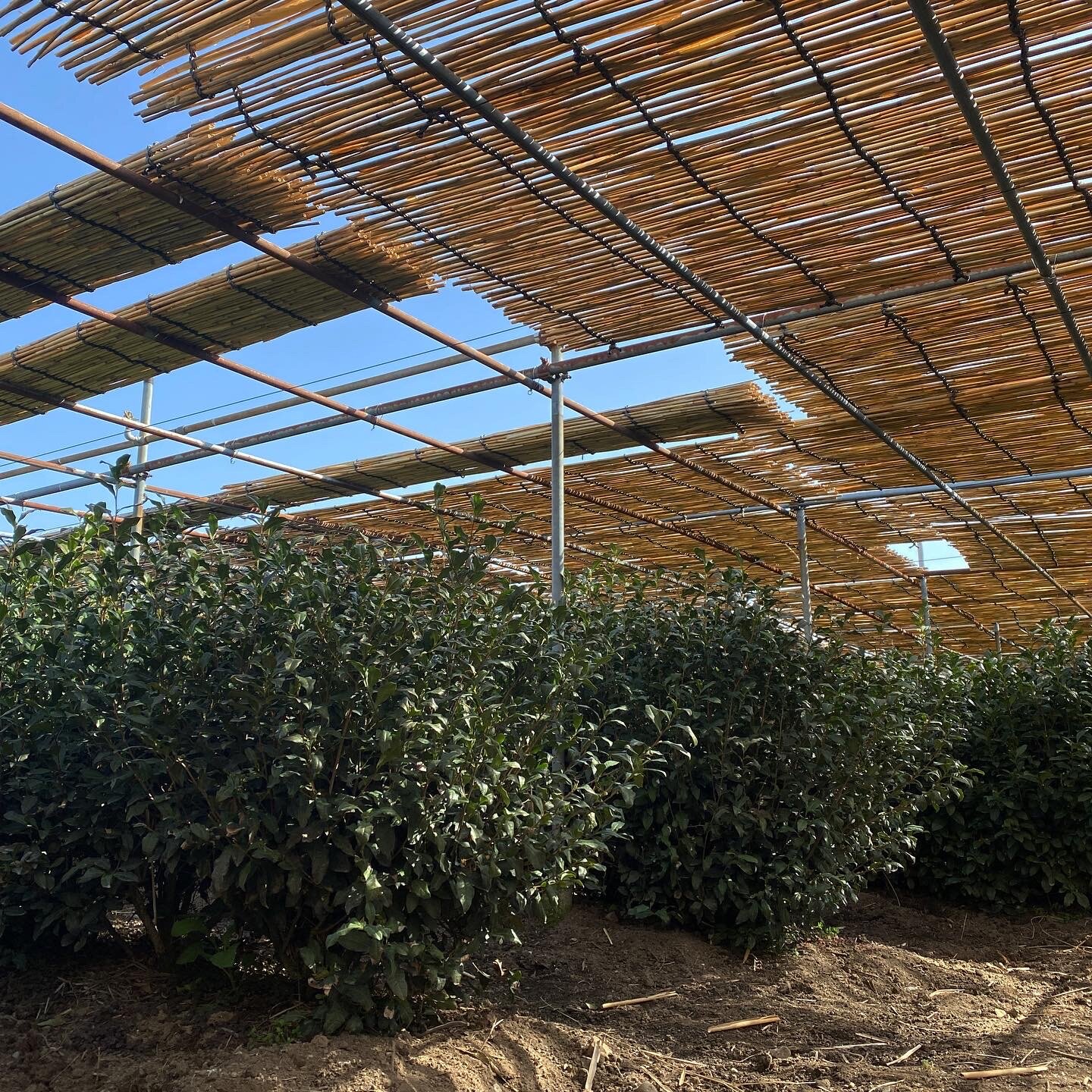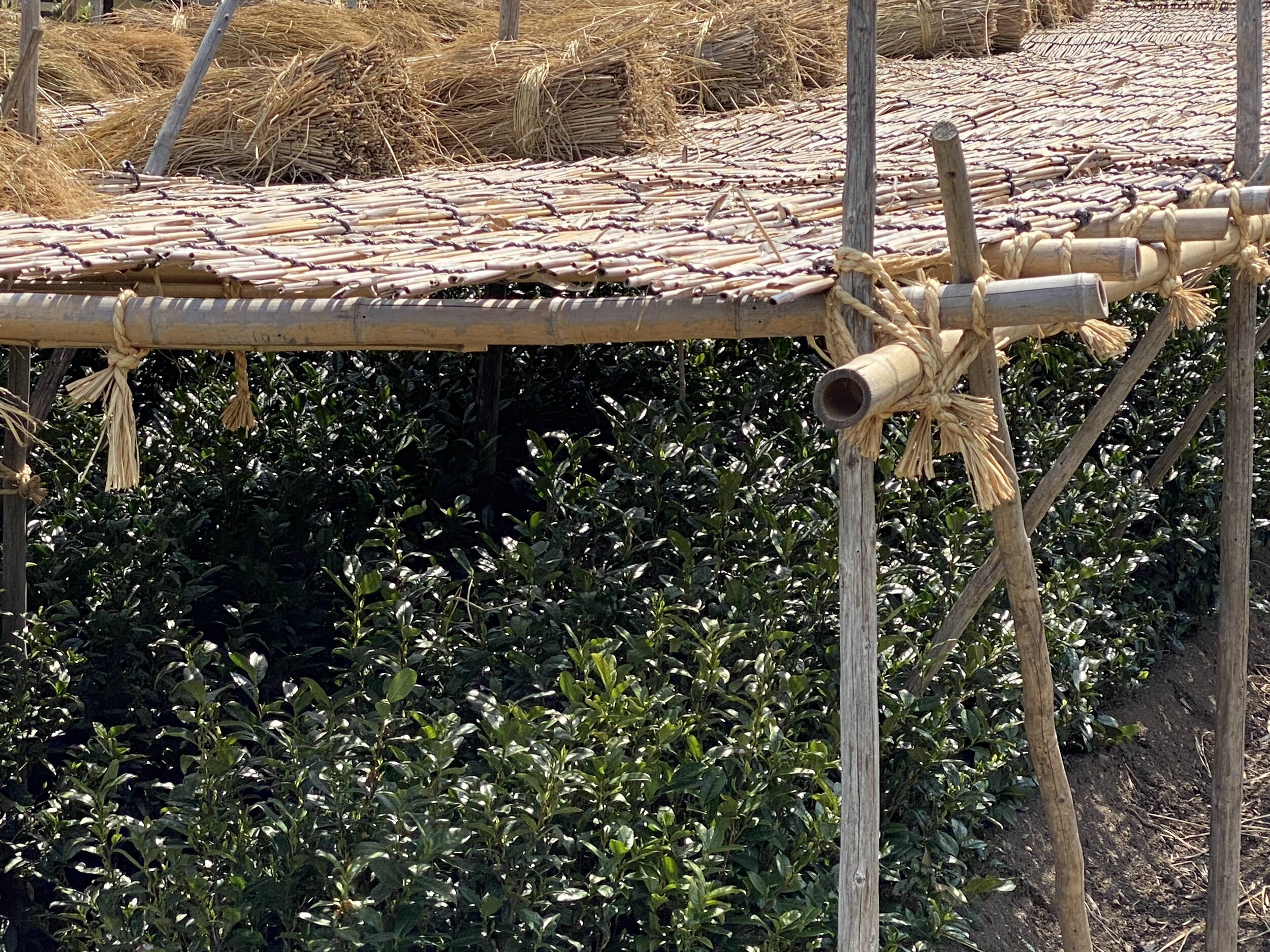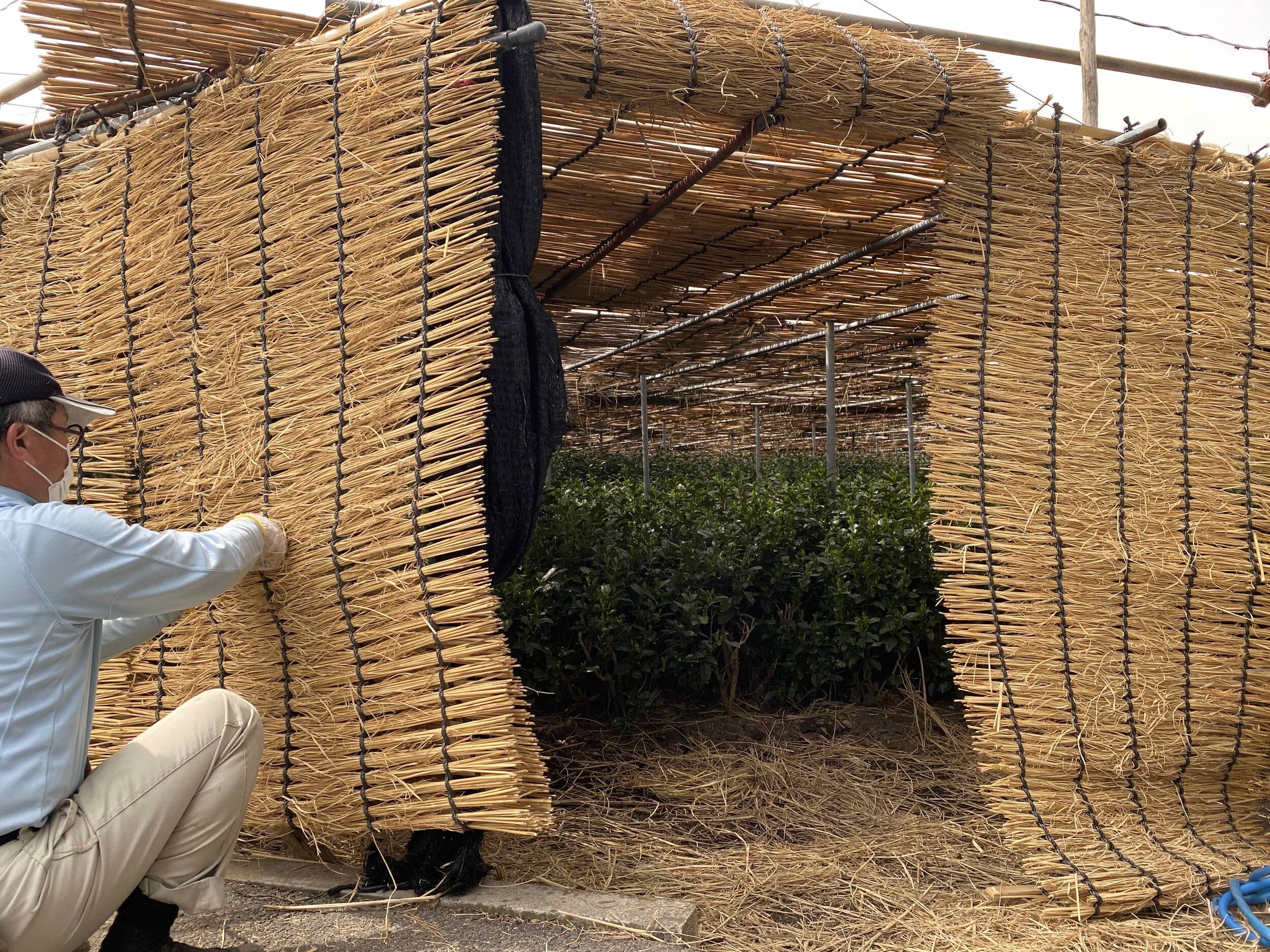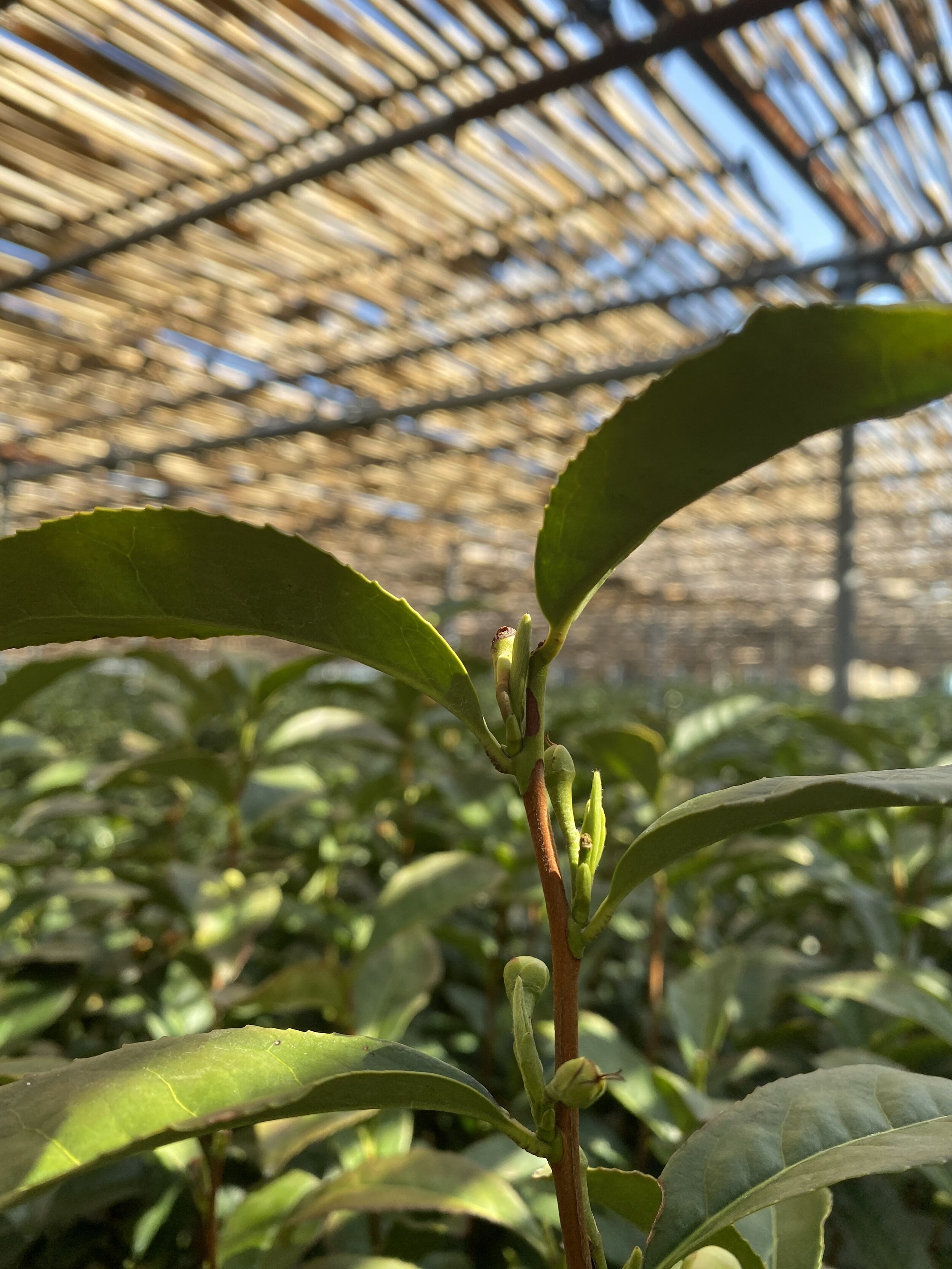What is Matcha tea?
When I came to the UK in 2002, nobody was talking much about Matcha tea, though Matcha latte was becoming popular. Nearly 20 years on, I am really pleased so many people are now enjoying proper Matcha tea!
If you are not familiar with Matcha, it might be a strange thing to see such a bright green powder. So I thought I would explain what it actually is, and how Matcha tea is produced.
How to produce Matcha tea
Firstly, it’s important to know that all teas are made from one species of plant, the camellia sinensis. For Black tea and Green tea, the plant is harvested three times a year, and grown under full sunshine. But for Matcha tea, it is harvested just once a year, and the growing process is much slower, as the tea farmers put a cover over the top of the tea plants. (See attached images.) This shields them from direct sunlight, and slows the growth process right down, providing very soft leaves and the sought-after Umami, tender taste.
Our tea maker Marukyu Koyamaen says their tea farmers use bamboo to make room-structures over their tea plants, which they cover with straw (see attached images). Under the straw, the atmosphere is cool and humid, ideal for producing tender tea leaves. As you can see from the short film, when the farmers lay down the straw, they flip it over, which causes some of the chaff to fall to the ground, enriching the soil, and helping to produce better quality leaves.
This work is normally done at the end of March, with the tea leaves being harvested in early May. The tea farmers will open and close the straw roof between March and May in order to control the sunlight and humidity levels to produce the best growing conditions.
These ideas have been developed and inherited by the tea farmers in Kyoto over centuries, and I love to see them working, using their ecological, time-consuming methods in such wonderful natural scenery. Not all Matcha farmers have quite this level of approach, but it is amazing to see the very highest quality standards being applied in Japan. When I went to Marukyu Koyamaen’s tea factory in Uji in Kyoto two years ago, it was clear that however time-consuming or old fashioned their processes were, they were proud to be producing what is the best Matcha tea in the world. They were obsessed about tea in a very good way.
After the harvest, the tea farmers steam and dry the tea leaves. Then finally the dried tea leaves are ground with stones into a fine tea powder. That’s why Matcha tea power is such a bright green. So we are consuming tea leaves at the same time as drinking tea. According to the tea makers, it is generally true that the bright green tea powder has the sweetest taste with a hint of umami, and that the darker green tea powder has a more bitter taste. It is also true that the older Matcha tea becomes, the darker its colours turns. The more bitter, older, Matcha tea, I would recommend for using when making Matcha latte.
The health benefits of Matcha tea
As I mentioned, when drinking Matcha tea, we are also consuming Matcha tea leaves. Tea leaves contain large amounts of Vitamin C and an anti-oxidant called catechin. You can read more about catechin and the health and beauty benefits of Matcha tea on the recent blog I did about it.





